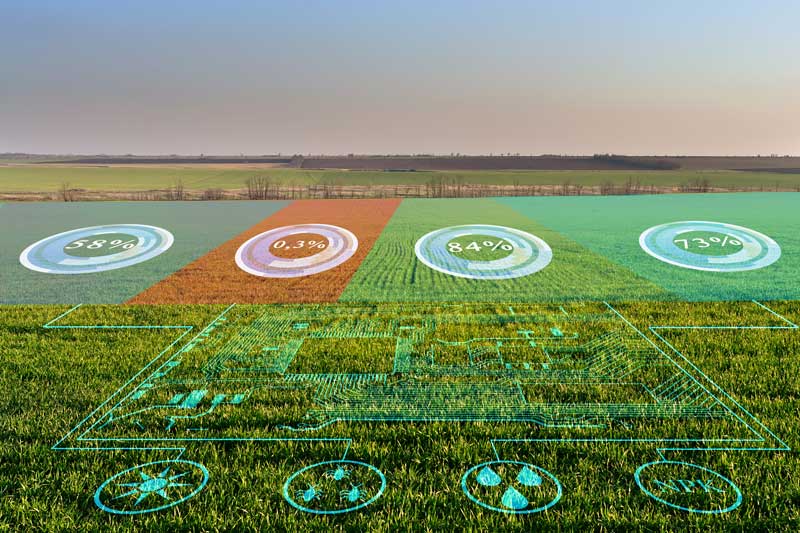When thinking about industries that use cutting-edge technology, many people might not have farming come directly to mind. The industry has been around for centuries, but there are still innovations happening that are changing the way people do the work.
The field of agricultural technology is constantly evolving to help farmers better do their work. It’s not just about getting the job done more quickly, with larger, more powerful equipment. The latest innovations in ag tech are smart technologies that can give insights into production. Much of that is through data and analytics that until now farmers might never have been able to collect. Here’s what data can tell us about farming.
Ag tech data collection
The days of seeing only manual labor on a farm are long gone. Most farms need to employ various levels of ag tech in order to stay competitive in the industry. The benefits can be seen anywhere from crop yields to the health of livestock.
- Product growth: Farmers can gather information that will help them better predict crop growth. They can use technology that can tell them precise temperatures and composition that maximizes soil performance, or that can identify problems such as pest infestations that can negatively affect growth.
- Environmental impact: Drones or other cameras can spot precise areas where pesticides or fertilizers might need to be deployed without being used unnecessarily in other areas, saving money and preventing the products from having a negative impact on the environment.
- Animal health: Sensors eliminate the need for people to check on animals individually. The information gathered can be used to check an animal’s health and make sure illnesses do not spread throughout a farm. Temperatures can be tracked to determine mating seasons, and historical data can show which spots are favored for grazing.
- Predictive maintenance: Some farms might just use technology that sends alerts about predictive maintenance on the machines they are using. This alone can save a farm time and money: rather than reacting to a machine breaking down and slowing a seeding or gathering process, for example, having a reliable schedule that is preemptive can keep everything running uninterrupted.
Importance of analytics
Agriculture is an unpredictable business. Whether it is related to labor or weather, there are elements that are out of the control of farmers that can drastically affect their work. The data can help bring a little bit of predictability and control back into the equation.

Graphic is from John Deere Connect Mobile app display. Click ‘View In Mac App Store’ at this link to see more
Consider the planting season. Technology allows farmers to plant thousands of seeds per second at specific depths and distances from one another that the data has shown them allows for optimal growth.
Smart machines can relay all of the information related to planting, spraying, or harvesting, and send alerts if growth is not progressing as expected. Each innovation moves the agriculture industry closer to, instead of making decisions for an entire field of crops, being able to maximize conditions for optimal growth of each individual plant.
The right analytics solution could be different for every farm. Ag tech is not one size fits all – what works for one farm might not work for another. It’s a matter of figuring out what areas are most in need of the information the technology can produce, rather than wasting money on cool new gadgets.
What most farms do have in common, though, is external pressure to do more. There is an oft-cited report from the Food and Agriculture Organization of the United Nations predicting that as the world population increases by almost two billion people by 2050, there will be a global need for 70% more food to be produced. For the agricultural industry, technology and data might not be just a business decision. It could help solve world problems such as food scarcity.
- What Data Can Bring to California’s Investment in its Ports - July 25, 2024
- Unlocking the Power of Data in the Utilities Industry - July 18, 2024
- How Analytics Can Help Your Wholesale Nursery Grow - July 17, 2024



